On Buddha Purnima this week, as pilgrims and monks gathered together at the Mahabodhi Mahavihara in Bodh Gaya to mark the enlightenment of Lord Buddha, the surroundings were expected to be those of peace, reverence and reflection. A peaceful celebration of Buddhist culture was what was expected.
Instead, it was pierced by the sound of ‘Jai Shree Ram‘ slogans—raised not outside on the streets, but within the temple complex itself. Hindu priests conducted rituals inside the sacred premises, Brahminical chants echoed through the air, and the Governor of Bihar stood as chief guest while Buddhist monks protested outside.
For the Buddhist community, this wasn’t just an intrusion. It was a symbolic erasure.
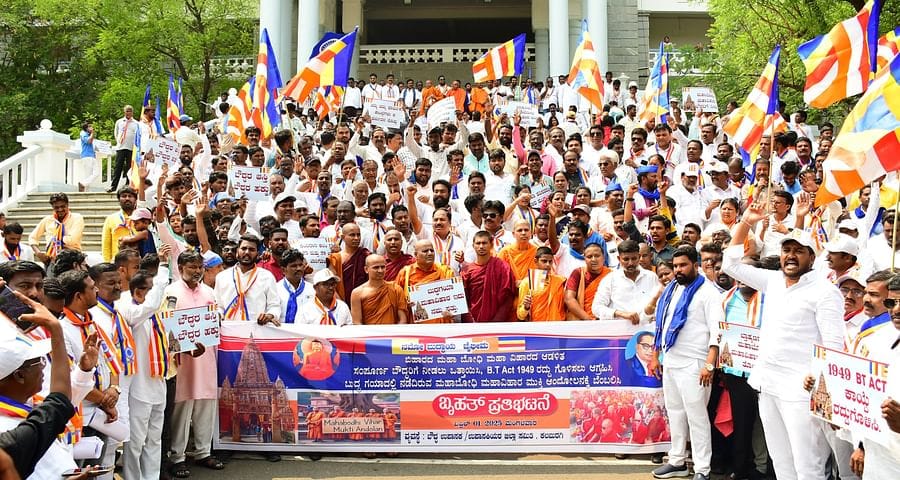
It wasn’t an isolated event either. The Mahabodhi temple at Bodh Gaya has long stood at the heart of a much deeper issue—the control of Buddhist religious spaces in India, and the larger project of cultural domination under the guise of national pride. This moment has made it impossible to ignore what many Buddhists have been saying for decades: Hindutva is not merely a political ideology; it is also a tool of appropriation.
How did we get here?
The roots of this conflict go back to 1949, when the Bodh Gaya Temple Management Act was passed. Despite Bodh Gaya being the holiest site in Buddhism, the Act allowed a predominantly Hindu committee to manage its affairs. Only one Buddhist member is required on the committee. A law passed before India’s Constitution came into effect, it has survived unchanged for over 70 years—even while Buddhist monks, scholars, and laypeople have continued to demand its repeal.
What happened here was not merely an accident. It was a part of a larger issue of Hindi Majoritarianism, where the Buddhist identity is either erased, folded into the Hindu fold or managed. This incident has caused a widespread outrage from not just in Bihar but across the Buddhist communities in the country.
Their anger is not just about slogans. It’s about being treated as outsiders in their own sacred spaces.
The missing monk and the silenced protest at Bodh Gaya
Since February 12, Buddhist monks have been holding a peaceful protest at Bodh Gaya. Their demand is straightforward: repeal the 1949 Act and return control of the Mahabodhi temple to the Buddhist community. But even this basic call for autonomy has been met with resistance.
Their demand is straightforward: repeal the 1949 Act and return control of the Mahabodhi temple to the Buddhist community. But even this basic call for autonomy has been met with resistance.
On February 13, Bhante Vinaycharya, a leading monk in the movement, went missing after a confrontation with a group that reportedly included men chanting “Jai Shree Ram.” Other monks were allegedly beaten during the same episode.
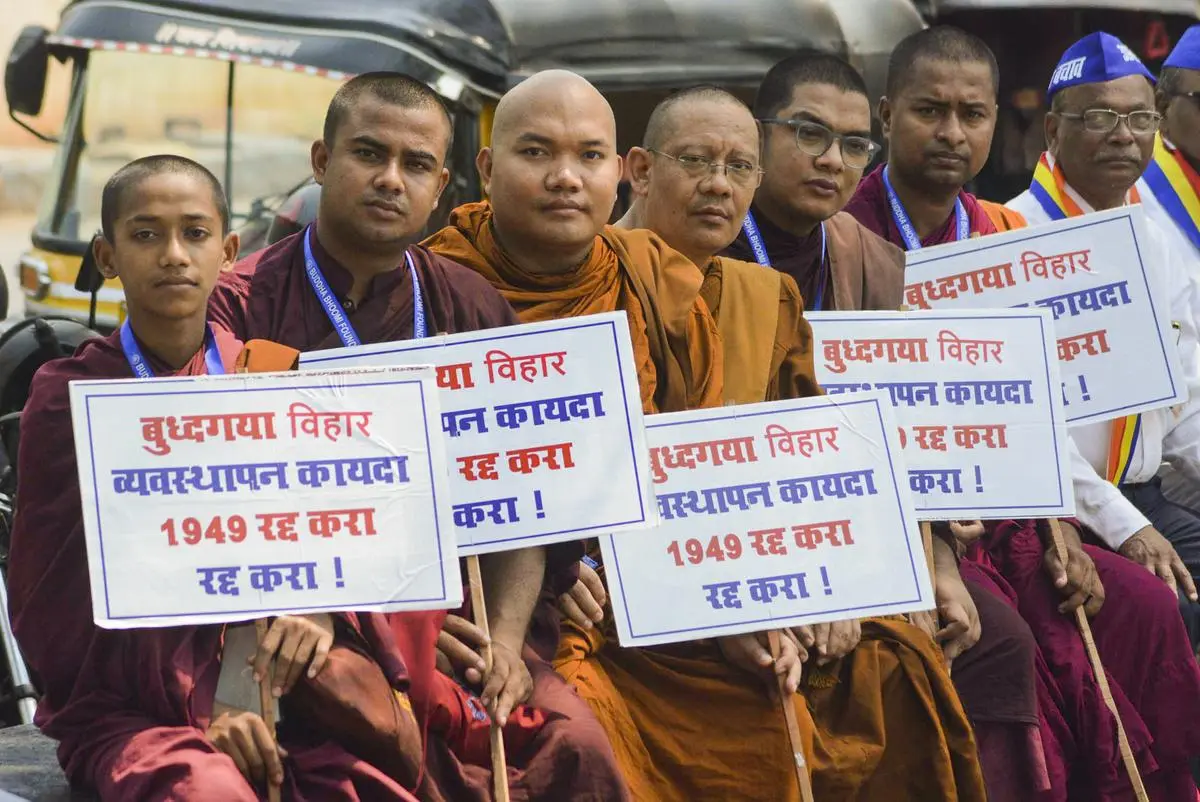
When monks are assaulted, when a spiritual leader disappears, and when a dharma rooted in peace is greeted with state-backed aggression, the question arises: Is India still safe for its minorities—even the ones born here, even the ones who have given it some of its most profound spiritual traditions?
A pattern of erasure leading to the incident at Bodh Gaya
The Hindutva project has long had an uneasy relationship with Buddhism. On one hand, it tries to fold Buddhism into a broader “Sanatan Dharma” narrative, claiming the Buddha as just another Hindu avatar. On the other, it seeks to suppress Buddhism’s radical history—one of caste resistance, equality, and open dissent.
From Anagarika Dharampala‘s movement in the 19th century against the Brahmin control of Bodh Gaya to the conversion of Dr. BR Ambedkar to Buddhism in 1956, Buddhism has always had a strong anti-caste, anti-hegemony voice in India. It has motivated the oppressed communities- especially Dalits- towards an inclusive spiritual imagination, one that believes in equality.
That is precisely why it is a threat to Hindutva’s vision of a rigid, hierarchical, Hindu Rashtra.
When monks call for Buddhist control over a Buddhist site, they are not just making a religious claim. They are resisting a larger political project—one that seeks to Hinduise every spiritual and cultural symbol in India, even those that explicitly rejected Brahminical authority.
What does it mean for democracy?
This issue goes beyond religion. It speaks directly to the health of India’s democracy. Article 25 of the Indian Constitution guarantees the freedom of religion. So why is a Buddhist temple—the most sacred one—controlled by a non-Buddhist body? Why are peaceful protests being met with violence or silence? Why is a monk missing and no major investigation underway?
Why are peaceful protests being met with violence or silence? Why is a monk missing and no major investigation underway?
At a time when India’s Chief Justice B.R. Gavai is a Buddhist, the Law Minister Arjun Ram Meghwal belongs to a Scheduled Caste, and Kiren Rijiju, the Minister of Minority Affairs, is also a Buddhist, these questions become even more pressing. If such high-level representation cannot protect the dignity of one of the world’s oldest minority communities, then what hope is there for the average Buddhist in India?
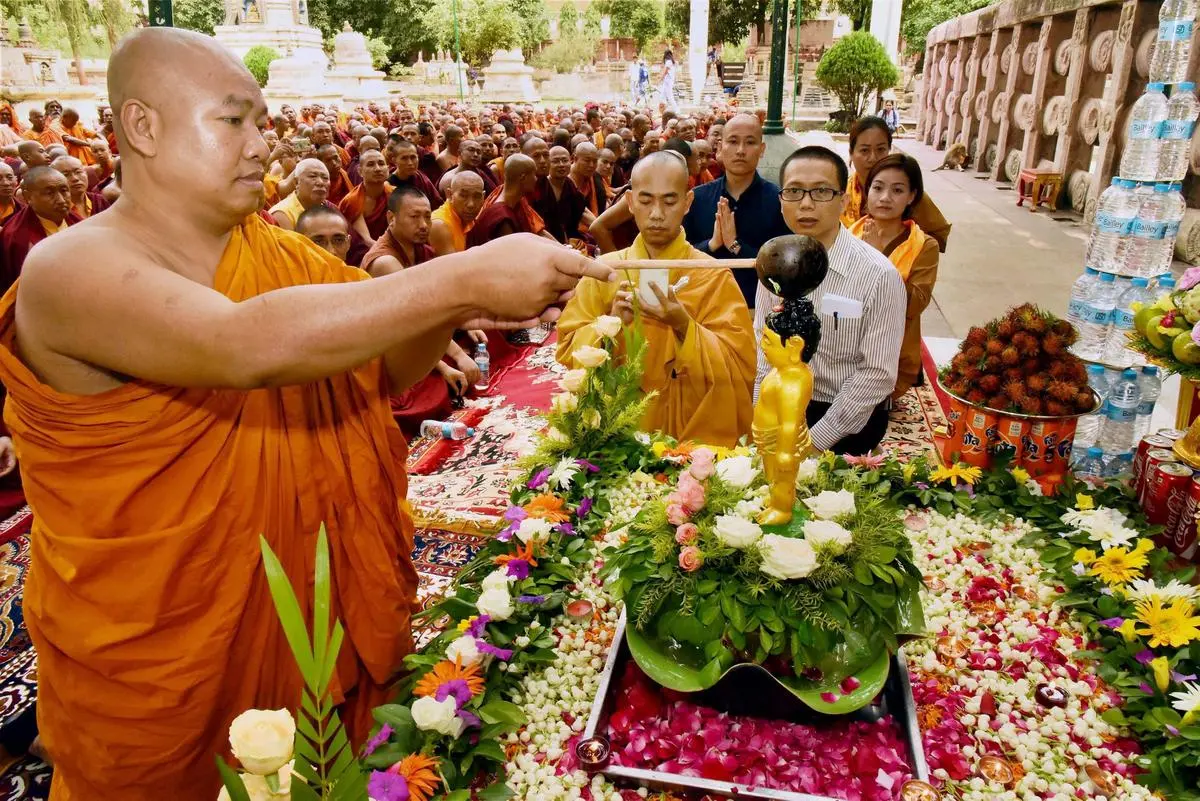
It suggests that representation without power means very little, especially when majoritarianism decides who belongs and who doesn’t.
What the slogans at Bodh Gaya really say
“Jai Shree Ram” is not just a slogan. In recent years, it has been weaponised as a battle cry during mob lynchings, hate rallies, and now, temple intrusions. When this slogan is shouted inside a Buddhist vihara, it carries a message: you do not belong here.
This is a power play, not an act of devotion. It’s about domination, not faith. And it’s made even more painful by the fact that Buddhism, as a tradition, has never been in competition with Hinduism—it has only asked to exist alongside, with dignity and autonomy.
But coexistence is not enough for Hindutva. It seeks absorption or annihilation.
This isn’t just about Bodh Gaya
What’s happening in Bodh Gaya is not limited to one city or one temple. It is part of a larger cultural shift, where symbols of India’s diversity are being homogenised.
Firstly, the rewriting of textbooks, where either Buddhist and Dalit histories are erased or distorted or played around with. Then Buddhist converts in states like Uttar Pradesh, Madhya Pradesh became easy targets. And now, even their sacred spaces remain no longer a safe space.
Then Buddhist converts in states like Uttar Pradesh, Madhya Pradesh became easy targets. And now, even their sacred spaces remain no longer a safe space.
Shall this continue, the movement to reclaim Bodh Gaya might spill into the national and international stage.
And it should. Because this is not just about management of a temple—it is about respecting the identity of a community that has given India its most powerful message: peace through equality.
What can be done?
The demands of the protestors are not unreasonable. They are asking:
- The Mahabodhi Temple Management Act, 1949 to be repealed.
- Buddhist monks to be given full control over the Mahavihara.
- Occurrence of an impartial investigation into the violence and the disappearance of Bhante Vinaycharya, the monk who went missing.
- That constitutional guarantees of religious freedom and minority rights be honoured in letter and spirit.
These demands do not harm national unity. If anything, they strengthen it, by reinforcing India’s commitment to pluralism.
What we choose to protect
India is home to some of the world’s greatest spiritual traditions.
But the traditions, this very diversity that India holds is only meaningful if each and every community feels safe, heard and respected in all aspects, because it’s the bare minimum. The Bodh Gaya incident today is a test— for the government and for all of us.
Should we allow those in power to rewrite our shared history? Should we just close one eye on slogans of domination trying to replace rituals of peace? Or should we stand by the communities that have given this country not just a religion, but a vision of justice and inclusivity without violence?
About the author(s)
Anushka Bharadwaj is a journalism graduate from SCMC Pune. She is an intersectional feminist with a deep interest in gender, caste, politics, and mental health. When she’s not writing or reading, she’s usually found lost in poetry, dancing to her favourite songs, or discovering new music—always reflecting on the world through stories.
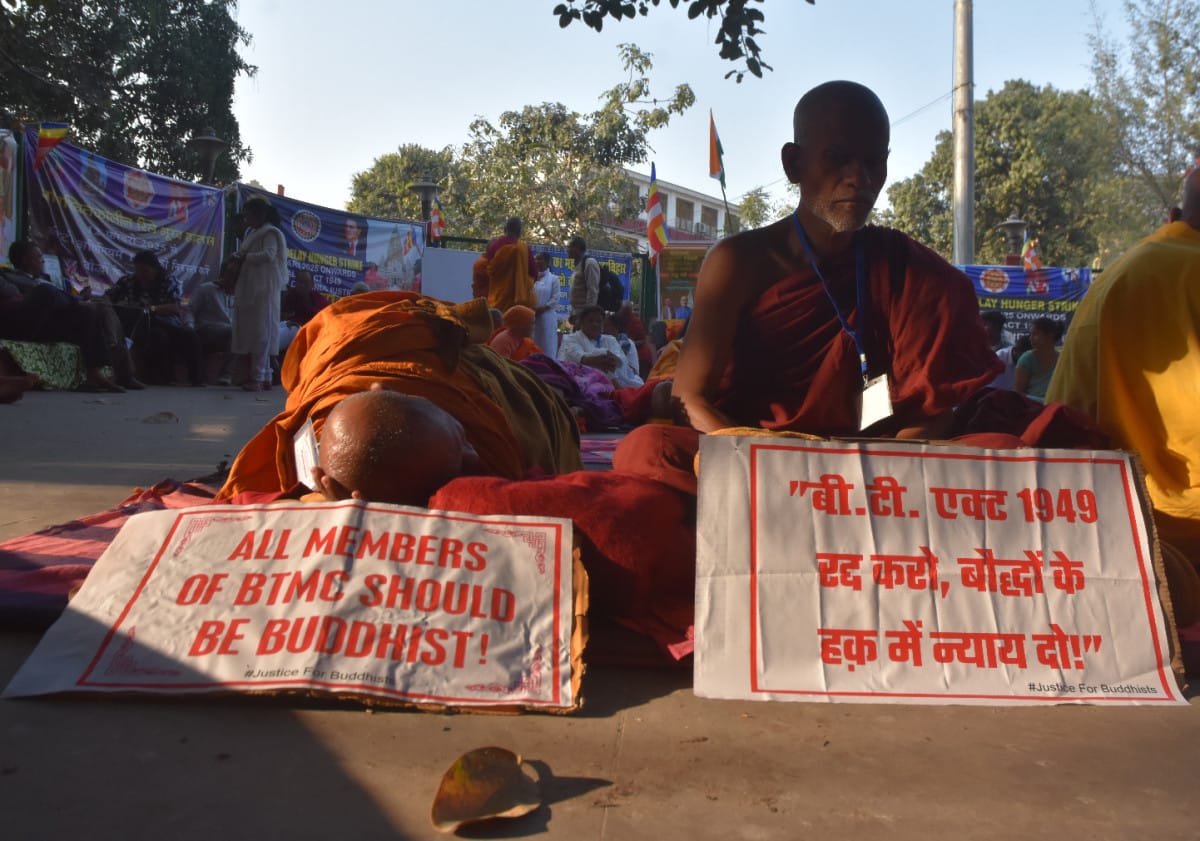
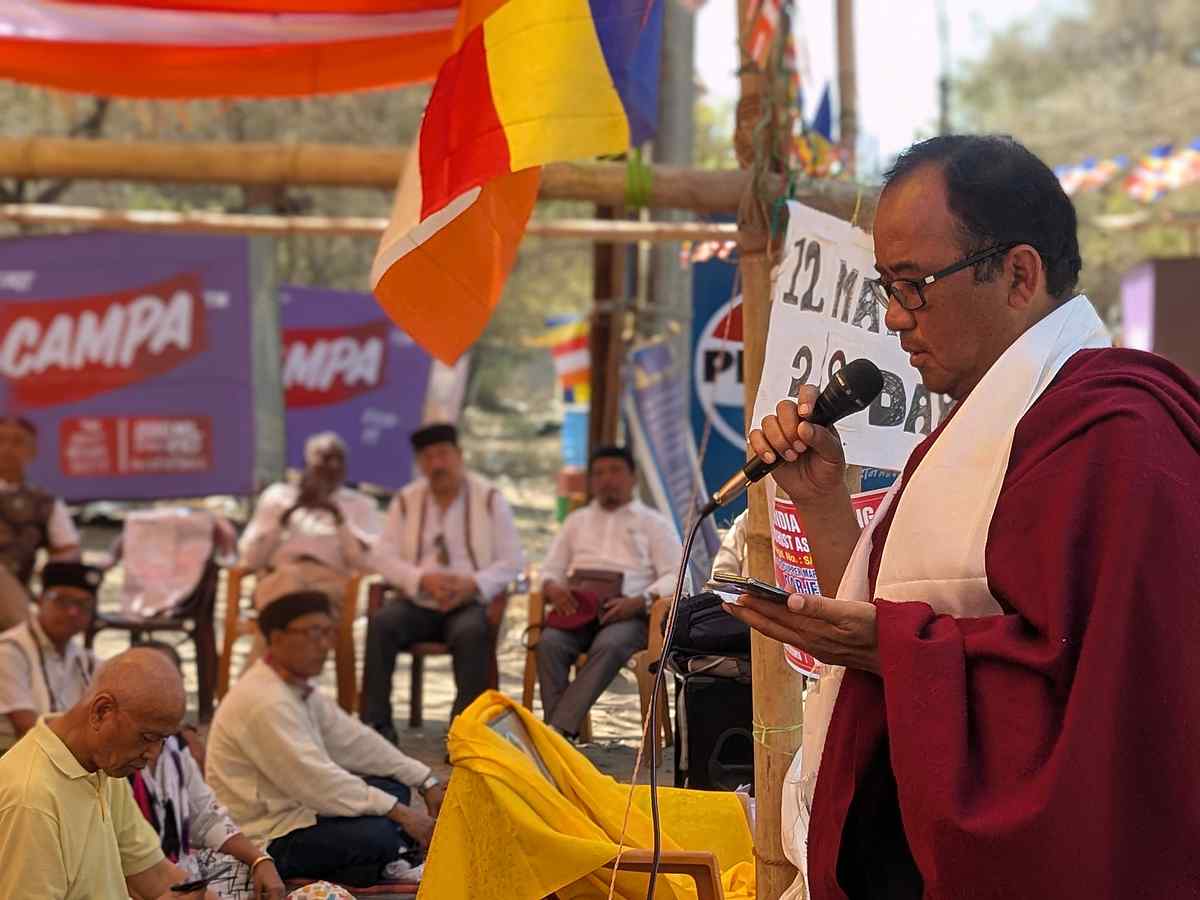

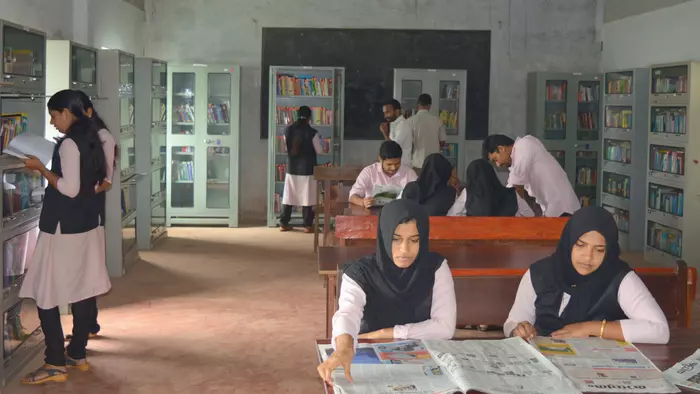
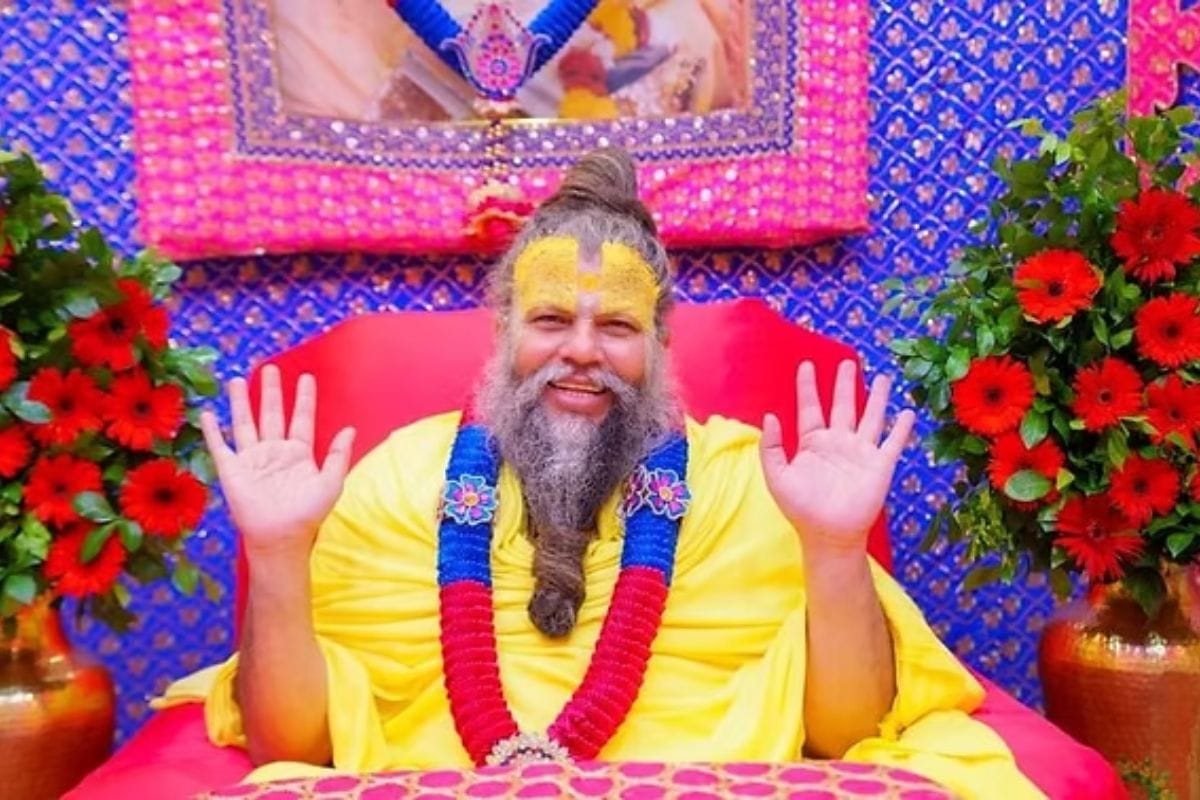
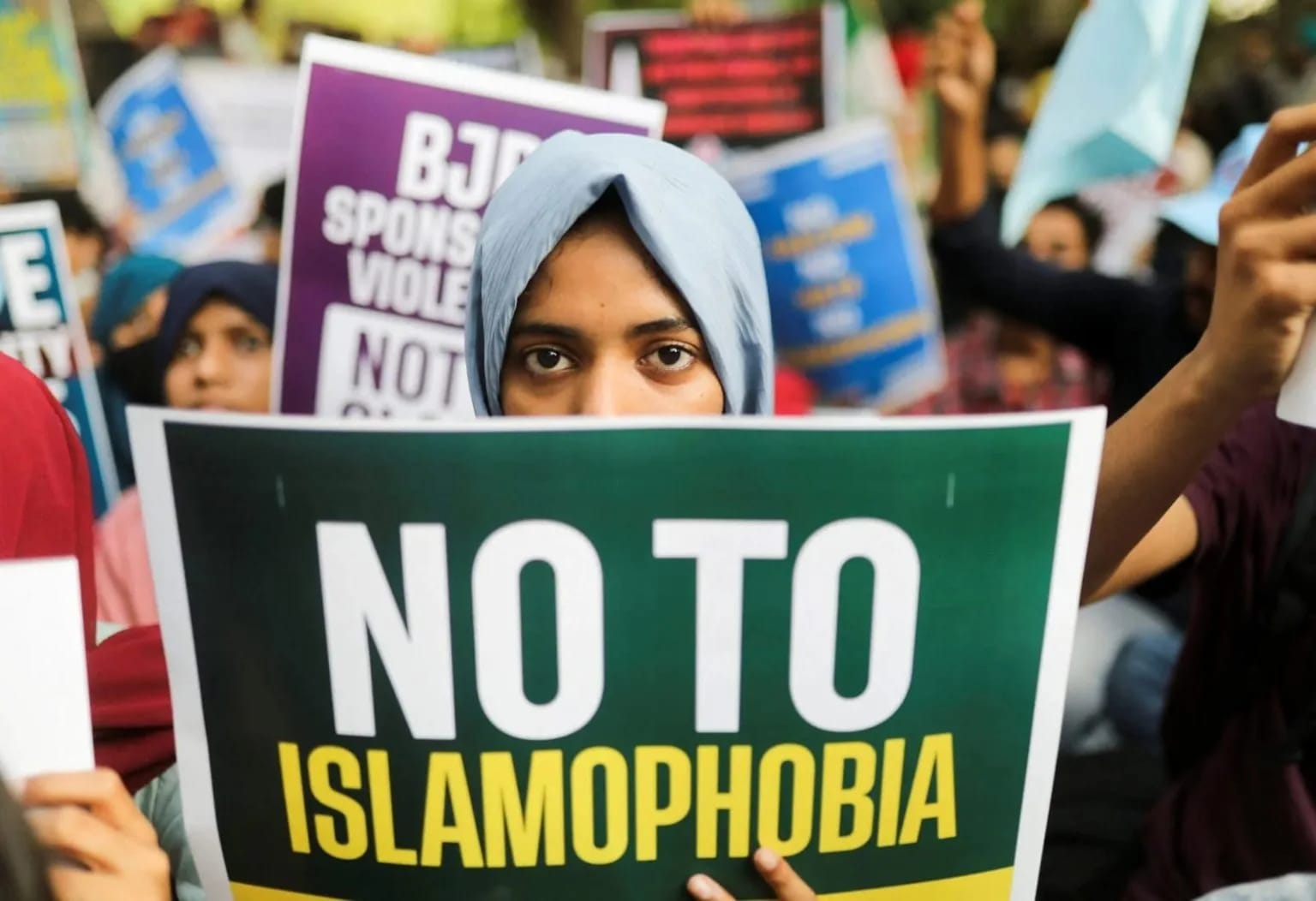

I am a Buddhist reading this from the USA. Another thing that must happen is for Buddhist institutions all over the world to speak up and protest. This is an International issue not just politics internal to India.